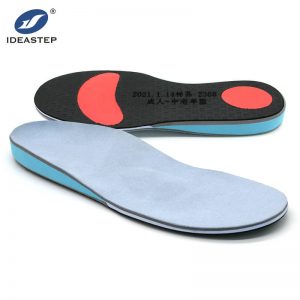How Orthotics Can Help With Hip Injuries
Custom orthotics can help with a variety of issues, including hip difficulties. Orthotics are specially developed devices that govern foot function and can increase stability and relieve discomfort by correcting alignment abnormalities in your feet and legs. Because they are individually designed to adhere to the unique shape of your foot, custom orthotics differ from over-the-counter insoles. By adjusting weight-bearing areas, orthotics can alleviate uncomfortable muscular strain and inappropriate movement. You might be wondering how fixing these issues can help you recover from hip injuries. The feet and hips, on the other hand, are inextricably linked, with one having a considerable impact on the other. Let’s take a look at how orthotics can assist.

The Hips’ Function
The hips are your body’s biggest joints. They, together with the knees, are in charge of sustaining your weight while you stand and walk. As the hip bone rotates around in the socket, a cushion of cartilage aids to reduce friction. Despite the fact that the hip is extremely sturdy, this cushion might wear thin over time and with repeated use. The cartilage, as well as the bones, tendons, and muscles that surround the hip, can deteriorate.
The following are some of the conditions that might lead to hip pain:
Osteoarthritis, Rheumatoid arthritis, and Septic arthritis are all types of arthritis.
Bone cancer and leukemia are examples of cancers.
Bursitis (joint inflammation), dislocation, and hip labral tear are examples of general injuries.
You may have discomfort in a variety of regions, depending on the disease that is causing the issue. Inside or outside the hip joint, the thigh, buttocks, and even the groin are examples of these locations.
Injuries to the hips are influenced by foot function.
Hip injuries can be caused or exacerbated by poor walking habits. Overpronation is a common cause of problems. When walking or running, pronation is the natural movement of your feet. With each step, your ankle will slide too far downward and inward if you overpronate. When your toes should be pushing off, your ankle stays rolling. This forces all of the push-off to be done by the big and second toes, while the foot twists more and more with each step. The entire body will begin to absorb trauma in all the wrong areas as you walk or run. There will be a tightness across the entire foot, causing a chain reaction. This reaction will start in the shin, progress to the knee, and finally to the hip flexors, resulting in pain and injury.
Another prevalent issue that can result in hip damage is supination. When your ankle rolls to the outside border of your foot, this is known as supination. When you push off with your toe while the heel lifts off the ground, the foot naturally supinates, or rotates. However, if this supination remains during toe-off, the weight is not correctly transferred to the big toe. This means that the outer regions of your foot and tiny toes do all of the work. This might put extra stress on the foot over time, resulting in a painful chain reaction up to your hips.
What Can Custom Orthotics Do For You?
Hip problems are commonly treated with custom orthotics. This is due to the fact that many physiotherapists believe in holistic healing. Treatment that addresses the complete body, rather than just the damaged area, yields better results.
The following should be considered while designing a bespoke orthotic:
Alignment — Redirects certain motions that occur during the gait cycle to realign the foot.
Support — Provides ankle support to prevent overpronation and supination (rolling motion to the outside edge of the foot)
Stability – Provides the required foundation for us to be able to manage and balance our bodies from the ground up.
Consult a skilled physiotherapist if you’re interested in custom orthotics. Focus Physiotherapy has the knowledge and experience to decide whether orthotics are the best treatment option for you. A medical examination of your foot will be performed first, followed by a biomechanical assessment, and finally a gait analysis of your walking patterns. The biomechanical evaluation will look for any bone misalignments, which can lead to a slew of issues. Meanwhile, the gait analysis will reveal whether one leg is shorter than the other or if your feet are flat.
Functional orthotics or accommodative orthotics will be given to you based on the results of your assessment. The purpose of functional orthotics is to control aberrant movements while also providing stability. Athletes and those who do a lot of physical activity can benefit from this. They’re commonly constructed of plastic or graphite, and they’re semi-rigid.
Because they’re designed to provide additional support and cushioning, accommodative orthotics are softer. Seniors with sensitive feet or those who are prone to calluses and ulcers will benefit from these sorts of orthotics. However, there are situations when a combination of functional and accommodative orthotics is required to manage your feet’s specific problems.
Ask your physiotherapist if orthotics are a good solution for you if you have a hip injury or joint inflammation.
